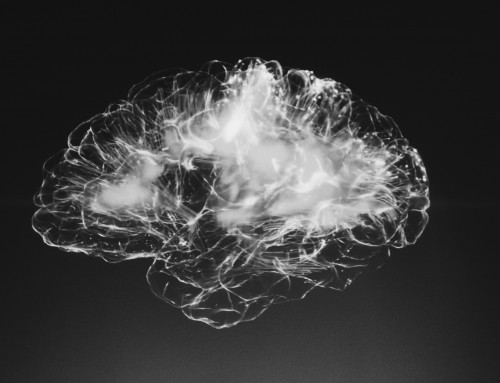With colder temperatures, darker days and nights that seem never ending, it’s not uncommon to feel a little down during autumn and winter. Until recent years, the phenomenon affectionately called the winter blues hasn’t been given the attention it deserves. Thankfully, with the rise in research into mental wellbeing, the winter blues are now recognised as a genuine medical condition: Seasonal Affective Disorder (SAD).
So just what is Seasonal Affective Disorder?
The NHS estimates that one in 15 people experience SAD between September – April, with the number of sufferers peaking between December – February. Defining a one-size-fits-all set of symptoms is impossible, as each individual experiences SAD differently. Some of the most common symptoms include:
- Persistent low mood
- Reduced interest in the activities you usually enjoy
- Lethargy/ constant tiredness
- Irritability
- Short attention span
- Difficulty waking up in the morning
- Craving stodgy, carbohydrate-rich foods
There’s still a lot of research to be done into the causes of Seasonal Affective Disorder. We know it’s linked to the reduced exposure to sunlight in winter. This lack of sunlight increases melatonin production (the sleep hormone) and leads to lower serotonin levels (the “happy hormone” that controls our appetite, sleep and mood). This change in hormones results in the symptoms listed above.
My SAD Story
As one of those affected by SAD, I wanted to share my story and the techniques that help me cope with it.
I had my first severe bout of SAD thirteen years ago while I was studying for my GCSEs. I remember walking to school one day in early October and I just felt “heavy,” both physically and mentally. It’s difficult to describe it any other way. I felt inexplicably lethargic, claustrophobic and very teary. My symptoms got worse over the following weeks and I was crying at pretty much anything and everything. I was also unable to concentrate on my mock exams and despite my tiredness, I couldn’t sleep.
I went to see my GP who diagnosed me with moderate depression and prescribed me some beta blockers. The medication masked the symptoms and I was able to get back to some level of normality for a while.
The unexplained change in mood hit again in February and October the following year. It was then that my mum did some research into my situation and discovered Seasonal Affective Disorder. It was one of those lightbulb moments where suddenly things start to make a lot more sense. Once I knew what was causing my symptoms, I was able to try out different coping techniques to discover those that worked for me. I’ve found several tools that help me and I haven’t had such a severe bout of seasonal depression since. I’m still super sensitive to the change in seasons, but I’m better equipped to help myself now.
How I tackle SAD
Exercise: This is my number one tool for managing SAD. I combine high intensity exercise to boost my heart rate with gentle yoga to help calm my mind. If there have been a few days of cloudy skies, nothing helps me more than a burst of cardio. A run is my go-to activity for beating a low mood. My guess is it must be down to the surge of endorphins produced, the aptly-named runner’s high. If you’re not mad on exercise, then a brisk walk should help too. Anything that raises your heart rate a little should help boost serotonin levels.
Light therapy: I honestly don’t know where I’d be without my SAD lamp. These specialist lamps simulate sunlight. The idea is that you switch on your lamp first thing in the morning to regulate serotonin levels. Timing is everything with light therapy – for example, if you fire up your lamp at 10pm, you’ll trick your body into thinking it’s morning and disrupt your sleep. Place your SAD lamp on a desk or coffee table, just out of your eyeline for 20 minutes every day.
Get outside: During my first few years battling Seasonal Affective Disorder, I became aware of just how little natural daylight I was getting. As a teenager, I went for days without leaving the house which I now know only stands to make me unbearably irritable! Now I get outside every day, even if it’s just a five minute walk to the local shop. I once heard that you should go outdoors as early on in the day as possible so your body registers daylight and can better regulate your hormones. (I guess it’s the same logic as using a SAD lamp in the morning rather than at night.) For me, staying indoors all day is often my biggest trigger for SAD symptoms.
Laughter: It might be the last thing you feel like doing, but sometimes laughter really is the best medicine. What never fails to make you giggle? For me, it’s the TV show Friends. It doesn’t matter how many times I’ve seen an episode (and believe me, it’s thousands!) it always lifts my spirits. So, whether it’s your favourite comedian, a friend who has you in stitches or a beloved sitcom like me, make time for the things, interests or people who make you smile.
Hearty but healthy meals: This is one I pay really close attention to. A vegetarian with a never-ending list of food intolerances, I often get stuck in a rut with my meals. Stir fries and salads are my go-to and while delicious, they rarely satisfy my SAD carb cravings. This means I fill up on sugar-packed cakes and biscuits later on. I’m working out the best way to get a balanced and craving-busting meal. Sweet potatoes are my super food of the moment. Roasted, baked or mashed, I can’t get enough of them!
Food for thought
I opened up the topic of managing Seasonal Affective Disorder on Twitter and got some interesting tips. One of my followers recommended vitamin D supplements and I can see the logic. As our main source of vitamin D is sunlight and a lack of sunlight leads to SAD, it’s not implausible to assume a vitamin D deficiency plays a part here.
The most important thing to remember when dealing with Seasonal Affective Disorder, is that you really aren’t alone. While there are different degrees of severity, so many of us are battling the winter blues as we move into the colder months. Find the things that bring you joy, get moving and look after your body with nourishing foods – your mind will thank you for it!
Click here to watch my video on this topic







Leave A Comment